Key Points
- Many Nigerian creatives struggle to fund their projects and careers.
- Gaining exposure remains difficult in a competitive and underfunded industry.
- Poor infrastructure and copyright issues threaten creative sustainability.
Various artistic scenes in Nigeria display numerous young talents in music combined with style, movie production, photography creation, written literature, and digital artwork. Numerous young creative artists face various problems which slow down their professional progress.
1. Insufficiency of resources and financial support
The required funds needed to support their work represent the most daunting challenge faced by Nigerian young creatives. All creative projects such as music fashion and movies demand funding for advertising production and distribution activities. Ordinary banks reject providing loans to creative individuals because they classify their industries as risky and unpredictable. Little funding through grants and sponsorship opportunities stands as a barrier to development because many artists have restricted monetary resources.
Young creatives will need to discover new financial opportunities to advance if they want to succeed in their endeavors. The online platforms GoFundMe, Kickstarter and Patreon together with other crowdfunding sites enable supporters to donate money. Creatives who seek financial support can obtain vital funds through grants awarded by businesses such as the Bank of Industry and the Tony Elumelu Foundation.
In addition to seeking external financing artists should actively develop ways to generate profits by providing consulting services as well as freelance and teaching opportunities. Creative ventures need long-term support which financial management skills provide through savings techniques together with investment knowledge and budgeting abilities.
2. Restricted networking prospective and exposure
Nigerian creative youth face struggles finding appropriate professional contacts together with marketing their work correctly. It becomes difficult for everyone to gain mainstream success or attract paying customers because a strong network is essential. Creative individuals need relationships for success but young people currently suffer from lack of networking activities along with missing creative hubs that could support their connections.
Social networking has become an essential tool which people need in order to become visible. Through social media sites Instagram and TikHub and Twitter together with YouTube creatives present their work to audiences worldwide. The utilization of compelling material and consistent posting as well as purposeful hashtag utilization both elevate visibility significantly. The combination of internet exposure supplemented by Lagos Fashion Week, Art X Lagos and AFRIFF (Africa International Film Festival) events enables vital connections with industry professionals. Collaborating with knowledgeable creatives represents a very effective strategy. Young creative individuals can enhance their reach and discover new market opportunities by taking on business projects that involve well-known leaders. Performing mentoring services and providing job opportunities emerges from participating in creative communities and internet-based organizations.
3. Unstable infrastructure and power supply
Nigerian artists face severe obstacles from irregular electric power services in combination with insufficient infrastructure resources. Photographers music producers along with graphic designers who work as digital artists share their content through the internet after producing and editing their work using both electricity connection and internet access. The unreliable power grid coupled with pricey internet usage makes productive work difficult to accomplish in Nigeria.
A majority of creative professionals obtain supplemental power supply equipment such as generators and inverters and solar panels since their work depends on continuous power. These numerous workflow investments come with an expensive commitment for continuous operations before delivering another essential aspect relating to data price management. Night data plans along with downloaded materials for offline access combined with free co-working Wi-Fi services both enhance creativity productivity and reduce monetary costs. The use of offline Adobe Photoshop, Final Cut Pro and FL Studio permits continuous work because internet accessibility remains inconsistent. The ability to select tasks that match periods of uninterrupted electrical access while adding data backup solutions cuts down project disruptions.
4. Copyright infringement & intellectual property theft
Intelligent property theft poses an extensive challenge in Nigeria’s creative artistic field. Multiple artists as well as singers and writers together with designers have experienced their works being compromised through illegal copying or their creative pieces being stolen or improperly utilized without permission. The insufficient protection through weak copyright regulation and feeble enforcement mechanisms renders it difficult for copyright holders to secure rightful ownership proof and financial compensation.
Young creatives need to protect their work by registering copyrights and trademarks through the Nigerian Copyright Commission (NCC) or by joining World Intellectual Property Organization (WIPO) as a foreign organization. Photographers and graphic designers as well as visual artists can prevent unauthorized work usage through digital signatures and watermarks. Music distribution monitoring services known as Content ID and digital rights management (DRM) tools operating on YouTube and Spotify enable performers to both track and govern their music usage by users. Creatives should establish contracts before they begin working with any of their potential business partners including brands or companies. Partnerships that aim to stop exploitation should contain clear definitions for ownership rights and payment methods together with specific use limitations.
5. Insufficient industry guidance and mentoring
Young creative professionals experience professional difficulties because they do not obtain proper mentoring or guidance. Business leaders with experience are required to guide younger professionals away from making costly mistakes in contractual agreements along with brand development and career selections. Without proper mentorship young talents struggle to compete in their professional environment.
Business leaders should be contacted for assistance in handling this problem. The majority of accomplished creative professionals welcome appropriately handled requests for mentorship from emerging artists. Senior executives are likely to reply favorably through Twitter or LinkedIn and email when you write messages with kindness and professionalism thus creating the possibility of valuable mentors.
Through web learning resources such as YouTube, MasterClass and Coursera users can access industry trends and branding and entrepreneurship courses. A partnership between The Future Project and African Creative Hub provides a well-organized direction for mentoring programs. As a wonderful learning technique peers can serve as mentor figures to each other. Young artists build professional relationships with creatives to learn from each other as they develop their artistic paths.
Conclusion
Despite numerous difficulties Nigeria shows significant creative strength. Yout h creative professionals who leverage digital tools while securing investments can defend their intellectual rights and build effective networks to become viable in the business field. Nigerian creatives who display persistence and adaptability in their learning journey can develop their passion into sustainable profit through an approach that remains open to new learning opportunities. The growing creative industry in Nigeria provides young people with profitable paths through active removal of business obstacles.



